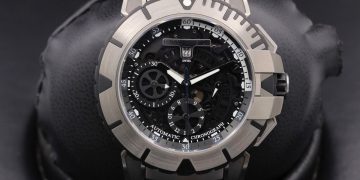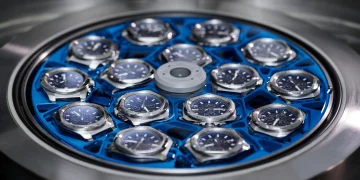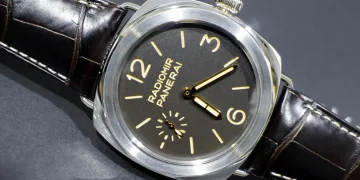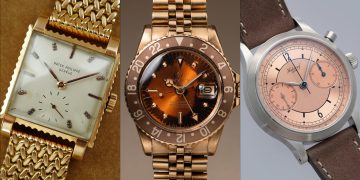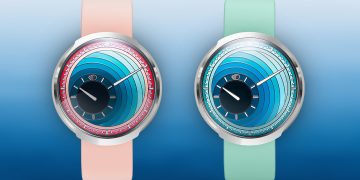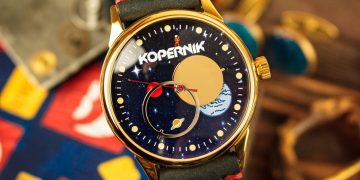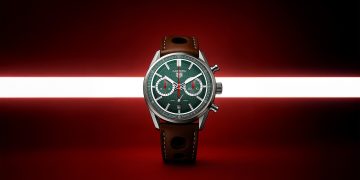Introduction:
The watch industry, traditionally grounded in centuries-old craftsmanship, has undergone a dramatic transformation in recent decades. Once dominated by mechanical movements and artisanal skill, watchmaking is now heavily influenced by technological advancements. From smartwatches that offer a multitude of digital features to advanced materials and innovative movements, technology is continuously reshaping the way timepieces are conceived, crafted, and worn.
But with all these changes, a fundamental question arises: Has technological innovation truly enhanced the wearing experience of a watch? While technological advances certainly promise to make watches more functional and versatile, do they improve the actual experience of wearing a timepiece—whether it’s the feeling on the wrist, the interaction with the watch, or the emotional connection it creates? In this article, we will explore how technological innovation has influenced the wearing experience and whether these changes have been beneficial or detrimental to the essence of what makes a watch special.
1. The Evolution of Watchmaking: From Mechanical to Digital
1.1 Traditional Craftsmanship vs. Technology
For centuries, watchmaking has been defined by mechanical craftsmanship—a process that involves hand-finishing intricate movements and components. These mechanical watches, driven by gears, springs, and balance wheels, have long been appreciated for their artistry and precision. Wearing a traditional mechanical watch has always been about more than just telling time; it’s a celebration of heritage, craftsmanship, and luxury.
However, as technology began to make its way into the industry, we witnessed the rise of quartz movements in the 1970s, followed by the modern smartwatches that revolutionized the way we view timepieces. Quartz technology made watches more accurate, affordable, and durable, but at the cost of the emotional connection that comes with the mechanical movement. More recently, smartwatches have redefined what a watch can do, adding features such as health monitoring, notifications, and connectivity.
1.2 The Rise of Smartwatches and Their Impact on Wearing Experience
Smartwatches, such as the Apple Watch, Samsung Galaxy Watch, and Fitbit, have gained tremendous popularity, particularly among younger generations. They offer a range of digital functionalities, from fitness tracking to messaging, allowing users to remain connected throughout the day without needing to pull out their smartphones.
While these devices are undeniably convenient, one might argue that they lack the emotional connection that mechanical watches offer. The experience of wearing a smartwatch is often rooted in utility rather than craftsmanship. For many, wearing a smartwatch can feel like wearing a piece of technology rather than a luxury accessory. The question arises: Does the functionality of a smartwatch truly enhance the wearing experience, or does it detract from the elegance and artistry that many value in a traditional watch?
2. The Impact of Materials and Manufacturing Innovations on Wearing Comfort
2.1 New Materials for Greater Comfort and Durability
One of the major technological innovations in modern watchmaking is the introduction of advanced materials. These materials not only improve the durability of timepieces but also enhance the comfort and wearability. Materials such as titanium, ceramic, and carbon fiber have become increasingly common in watchmaking due to their lightweight nature, scratch resistance, and corrosion resistance.
For instance, titanium is renowned for being much lighter than stainless steel, making it an excellent choice for those who want a comfortable wearing experience without sacrificing strength. Ceramic, on the other hand, offers a high degree of scratch resistance, ensuring that the watch remains in pristine condition over time. Carbon fiber watches are incredibly lightweight yet strong, providing a durable and modern aesthetic.
These materials not only improve the overall wearing experience by making watches lighter and more comfortable, but they also ensure that the timepiece withstands the test of time, both in terms of durability and style. For many watch enthusiasts, the ability to wear a high-performance watch without feeling weighed down is a significant improvement in the overall wearing experience.
2.2 The Role of Watch Straps and Bands
The development of innovative straps and bands has also improved the wearing comfort of watches. Traditional leather straps, while luxurious, can often be stiff or uncomfortable over time, especially in hot or humid climates. Newer materials, such as silicone, rubber, and NATO straps, have been designed for better flexibility, comfort, and breathability. These materials also contribute to a more customizable and versatile wearing experience.
Moreover, brands have begun experimenting with adjustable bands that use magnetic closures or quick-release systems, allowing wearers to easily change the strap or adjust the fit without tools. This innovation makes it easier for individuals to tailor their watch to their personal style and comfort level, improving the overall wearing experience.
3. Functional Innovation: Does It Enhance the Wearing Experience?
3.1 Health Monitoring and Smart Features
One of the most significant innovations in modern watchmaking is the addition of health monitoring and fitness tracking features. Many smartwatches now come equipped with sensors that can track metrics like heart rate, blood oxygen levels, and sleep patterns, as well as monitor physical activity. These features provide immediate benefits to the wearer, particularly those interested in maintaining or improving their health and fitness.
For example, a smartwatch that tracks your heart rate or steps can motivate you to stay active and achieve personal fitness goals. It also provides a level of convenience by offering real-time data on your wrist. For some, this enhances the wearing experience by adding a personalized dimension to the watch’s functionality, making it more than just a timekeeper but a health assistant.
However, there is also the question of whether such features enhance the emotional connection to the watch. Many traditional watch enthusiasts enjoy the tactile interaction with their timepiece—winding the crown, adjusting the hands, or simply admiring the craftsmanship. The addition of digital functionalities in smartwatches shifts the focus toward practicality and data, rather than the sensory and emotional connection to a finely crafted mechanical timepiece.
3.2 Long Battery Life and Charging Innovations
Another key aspect of smartwatches that affects the wearing experience is the battery life. Early smartwatches were notorious for needing daily recharging, which detracted from the convenience factor. However, technological advancements have led to improvements in battery technology, with some smartwatches now offering up to several days of usage on a single charge.
Moreover, fast charging and wireless charging have made it easier and more convenient for users to maintain their devices. These innovations make it possible to wear a smartwatch without constantly worrying about running out of battery, which is a significant improvement in terms of convenience.
For traditional mechanical watches, battery life is, of course, not an issue, as they are powered either by manual winding or automatic movement. However, the idea of not having to worry about charging may appeal to those who find the ongoing need to recharge digital devices to be cumbersome.

4. Technological Complications: A Blend of Craft and Innovation
4.1 Advanced Mechanical Complications
It’s important to note that even within the realm of traditional mechanical watches, technology has been used to create some remarkable complications. The introduction of silicon components, for example, has led to innovations such as the Co-Axial escapement by Omega. These technological advancements not only improve the accuracy and durability of the movement but also reduce the friction between the moving parts, ensuring a smoother and more reliable experience for the wearer.
Furthermore, the development of micro-engineered components has allowed watchmakers to create smaller, more compact movements with greater functionality. For example, chronographs, tourbillons, and perpetual calendars are now more advanced than ever, providing watch enthusiasts with intricate and functional mechanical wonders that enhance the experience of wearing a timepiece.
These technological improvements in traditional watchmaking are not just about making the watches more accurate; they are about pushing the boundaries of what is possible in terms of mechanical complexity, which can deeply enhance the emotional and intellectual experience of wearing a luxury watch.
5. Conclusion: Technology—A Double-Edged Sword for the Wearing Experience
In conclusion, technological innovation in watchmaking has undeniably improved several aspects of the wearing experience, especially in terms of comfort, functionality, and durability. Advanced materials have made watches lighter and more durable, while smart features like health monitoring and notifications have added practical value for the modern wearer. Additionally, battery life improvements and smart charging systems have made smartwatches more convenient to wear daily.
However, while these innovations are undeniably useful, they also shift the focus of a watch from being a symbol of craftsmanship and luxury to a functional tool that prioritizes convenience and utility. The emotional connection that many enthusiasts feel with traditional mechanical watches might be diminished when smart features dominate the experience. The essence of wearing a timepiece—whether mechanical or smart—depends on how much the wearer values tradition, emotion, and craftsmanship alongside the functional benefits of modern technology.
Ultimately, the technological innovations in watchmaking have enhanced the wearing experience for many consumers, but whether these innovations have truly improved the experience depends on the individual’s perspective and priorities. For some, the blend of technology and craftsmanship is a perfect marriage, while for others, nothing can replace the experience of a beautifully crafted, mechanically-powered timepiece.



